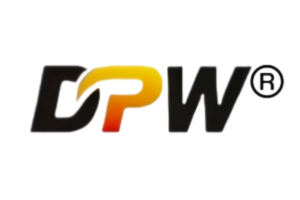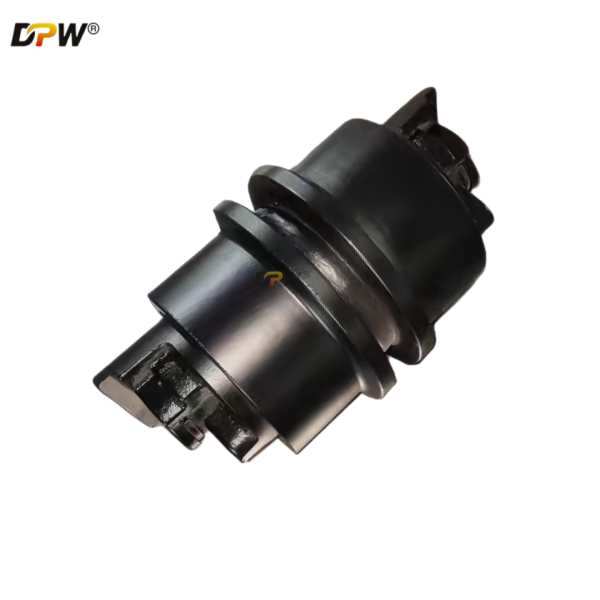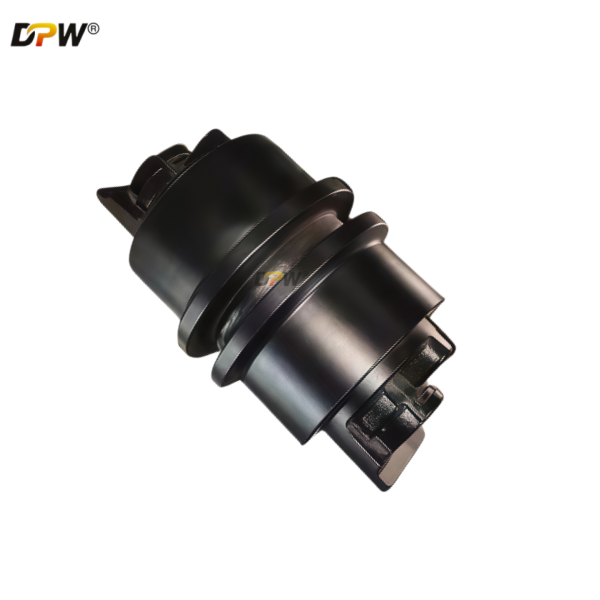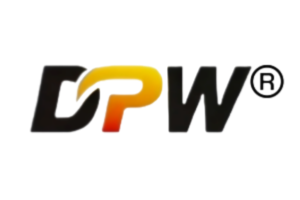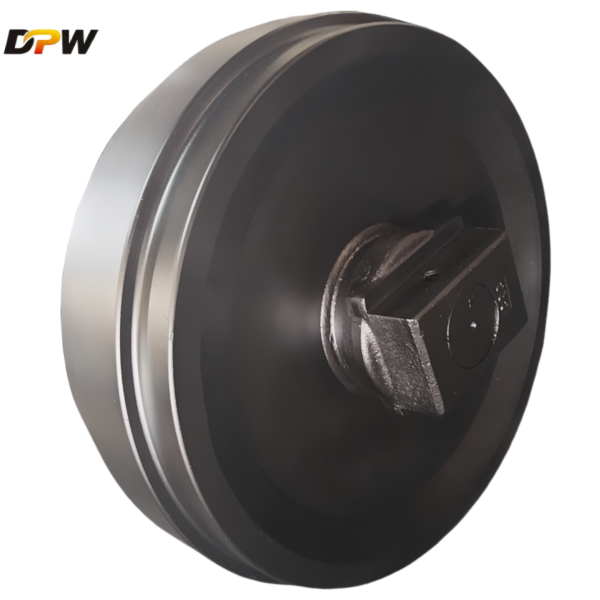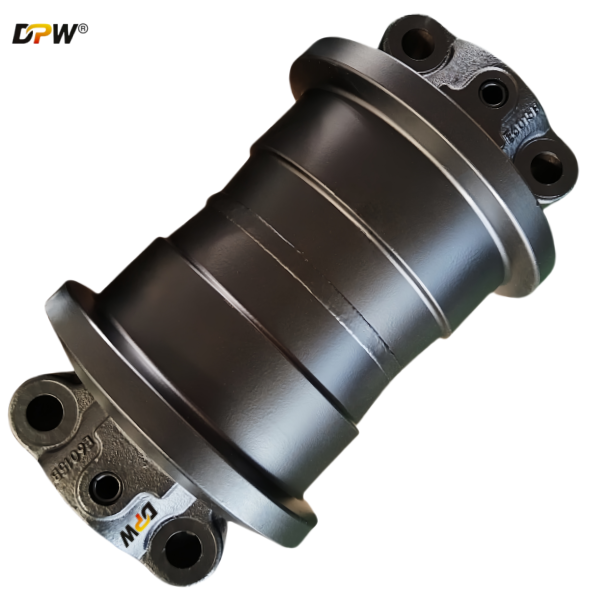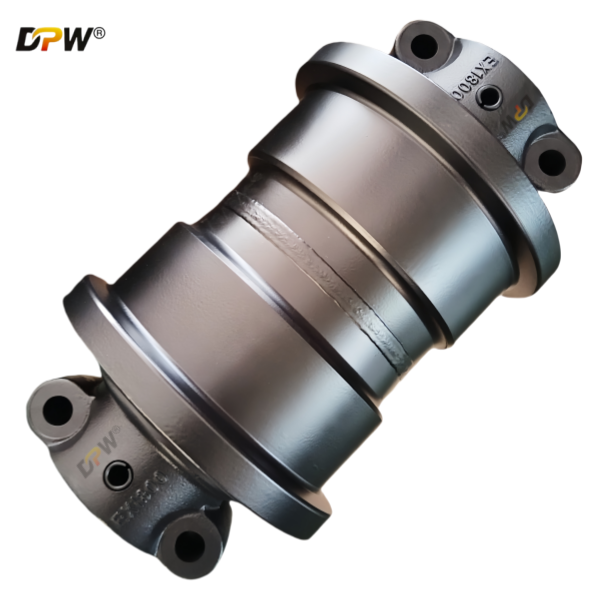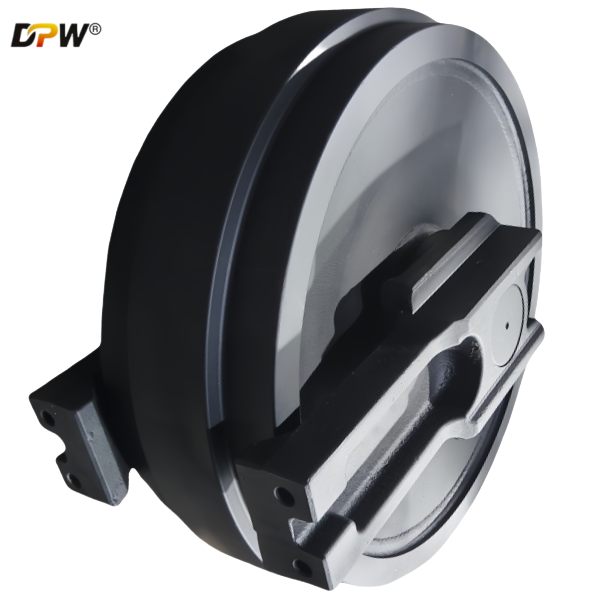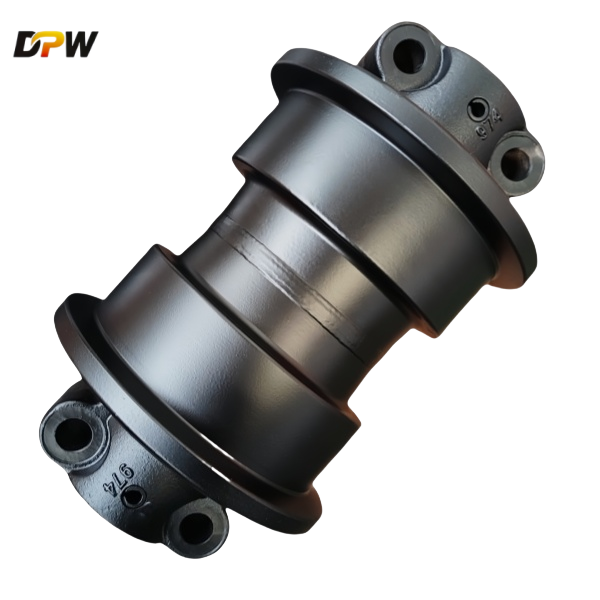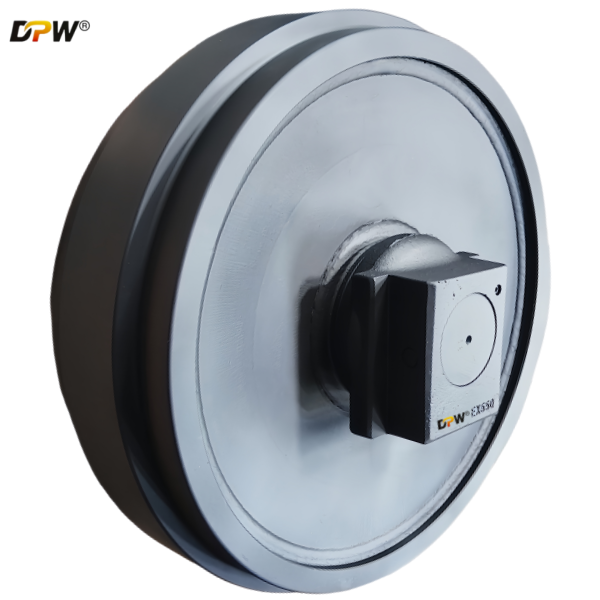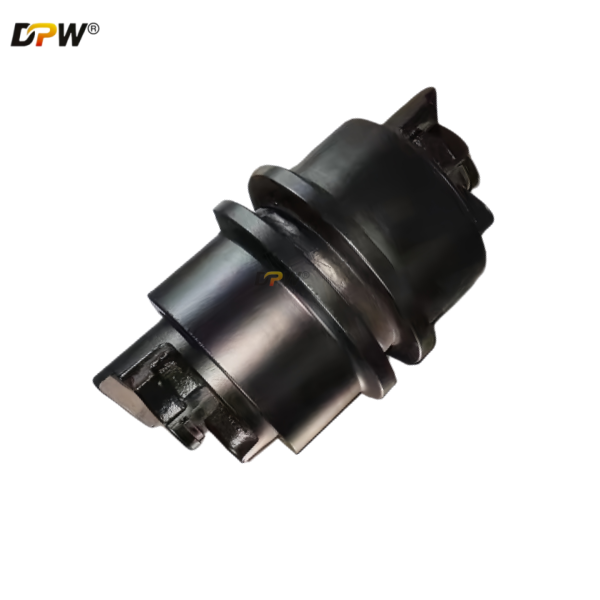
CASE CX75/CX80 KAA1160 undercarriage Track Lower Roller Assy for mini excavator undercarriage components
Product Specifications
Technical Analysis: CASE CX75/CX80 Mini Excavator Track Lower Roller Assembly
1. Functional Overview and Design Context
The Track Lower Roller (or Bottom Roller) is a fundamental component of the mini excavator's undercarriage system. For the CASE CX75 and CX80 models (typically in the 7-8 ton operating weight class), this assembly is designed for durability and performance in diverse applications, from landscaping to utility work. Its primary functions are:
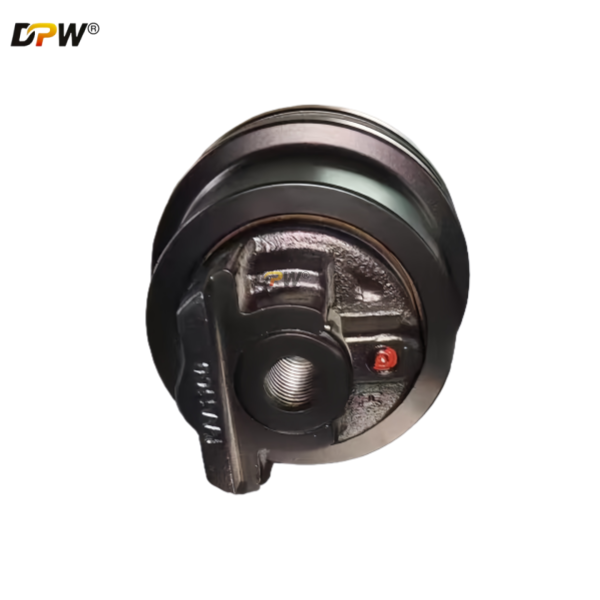
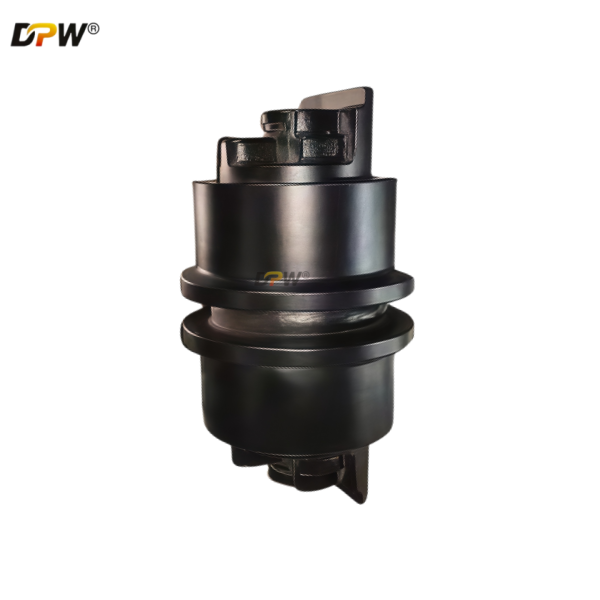
Load Support: It bears a significant portion of the machine's operational weight, supporting it on the lower track chain's guide flanges. The roller transmits the load through its shaft to the track frame.
Track Guidance and Alignment: The roller's flanges run inside the guide gaps of the track links, ensuring the track remains properly aligned with the sprocket at the front and the idler at the rear, preventing derailment.
Stability and Ground Contour Following: On smaller undercarriages like the CX75/CX80, the lower rollers are typically fixed directly to the track frame (as opposed to a bogie system on larger machines). Their collective action helps maintain machine stability and allows the track to conform to minor ground irregularities.
2. Component Breakdown and Engineering Specifications
The assembly is a sealed, pre-lubricated unit designed for extended service life. Its construction is robust yet compact, reflecting the demands of a mini excavator's typical duty cycle.
| Component | Technical Description & Specification |
|---|---|
| Roller Body / Shell | • Function: The hardened outer surface that contacts the bottom of the track link. It features a double-flange design to securely guide the track link. • Material & Treatment: Fabricated from medium-carbon steel (e.g., SAE 1045). The running surface and flanges are induction-hardened to a typical hardness of 55-60 HRC for superior abrasion resistance, while the core remains tough to absorb impact loads. |
| Shaft | • Function: The stationary central pin that is pressed and/or bolted into the track frame. It serves as the fixed axis of rotation for the entire assembly. • Manufacturing: Machined from high-strength steel, with precise diameters and surface finishes to ensure proper seal and bushing function. |
| Bushings / Sleeves | • Function: The primary wear surface. Pressed into the inner diameter of the roller shell, these bushings rotate directly on the stationary shaft. • Material: Most commonly oil-impregnated sintered bronze (Oillite bushings). This material provides excellent wear resistance and self-lubricating properties, which are crucial for survival in the event of minor seal compromise. |
| Bearing System | • Configuration: Many mini excavator rollers forgo tapered roller bearings in favor of a sleeve bushing design. This simplifies the assembly, reduces cost, and is sufficient for the radial loads experienced, though it has higher friction than anti-friction bearings. |
| Sealing System | • Type: Employs a multi-layered, labyrinth-style seal. This often consists of a primary radial lip seal (often a Nitrile rubber compound) combined with secondary dust lips and sometimes an metal face seal for heavier-duty applications. • Function: Critically, this system retains the internal lubricating grease and excludes abrasive contaminants like sand, silt, and mud. Seal integrity is the single most important factor determining roller service life. |
| End Caps / Side Covers | • Function: Act as structural covers to house the sealing elements and protect the internal components from direct impact with debris. They are typically welded or pressed onto the ends of the roller shell. |
| Grease Fitting (Zerk) | • Function: A standard SAE grease fitting allows for lubrication during initial assembly and for occasional replenishment of the grease cavity to compensate for minor leakage or degradation. |
3. Common Part Numbers (Reference)
Crucial Note: Always verify part numbers with the machine's specific Serial Number and the official parts catalog. Undercarriage components are frequently updated.
Complete Lower Roller Assembly (Common Examples):
CASE OEM P/N:
KAA1160(Example number; verify for your specific serial number)Aftermarket Equivalents: Manufacturers like DPW Parts, Loegering, and Kenco produce high-quality aftermarket assemblies. A common cross-reference might be
SH75or similar, but this must be confirmed.
Component Parts:
Seal Kit: Often sold as a repair kit for rebuilding a worn but structurally sound roller.
Bushing Kit: For replacing the internal wear sleeves.
4. Predominant Failure Modes and Diagnostic Symptoms
Flange Wear: The most common wear pattern. The guiding flanges wear down vertically, reducing their height. This compromises track guidance and can lead to derailment, especially during turns.
Seal Failure and Contamination: The primary cause of premature failure. A damaged seal allows fine abrasive particles to enter the bushing/shaft interface. This acts as grinding paste, rapidly wearing out the bushing and shaft, leading to increased internal clearance.
Seizure: A direct consequence of severe contamination or lubrication loss. The roller stops turning and is ground flat by the moving track link. A seized roller will cause rapid, catastrophic wear to the track link itself and create significant drag.
Excessive Play: Worn bushings and/or shaft result in noticeable radial (up-and-down) and axial (side-to-side) looseness. This causes erratic track movement, noise, and accelerated wear on adjacent components.
Cracking or Shell Damage: Impact with sharp rocks or rebar can cause cracks in the roller shell or damage to the flanges, necessitating replacement.
5. Maintenance and Operational Best Practices
Daily Visual Inspection: Check for rollers that are not spinning freely, show signs of significant grease leakage, or have damaged/worn flanges.
Cleanliness: After operation in mud or clay, clean the undercarriage to prevent material from building up and packing around the rollers. Packed debris can put extra strain on the seals and act as a grinding compound.
Appropriate Track Tension: Maintain track tension according to the operator's manual. For mini excavators, the "sag" measurement is critical. Overtightening drastically increases rolling resistance and load on rollers and seals, while undertightening can cause track whip and derailment.
Replacement in Pairs/Sets: For optimal performance and balanced wear, it is highly recommended to replace lower rollers in pairs (both on one side) or as a full set on the machine.
Rebuild vs. Replace: For cost-effective maintenance, worn rollers can often be rebuilt by specialized workshops. This involves pressing out the old shaft, replacing the bushings and seals, and reassembling with new grease.
6. OEM vs. Aftermarket Consideration
OEM (CASE): Guarantees perfect fit, form, and function. It is the benchmark for quality and is backed by the manufacturer's warranty. Ideal for users requiring guaranteed performance and for machines under warranty.
Aftermarket (Quality Brands): Offer significant cost savings while often providing comparable performance. Reputable aftermarket manufacturers use high-quality materials and advanced sealing technologies. They are an excellent choice for cost-conscious owners and older machines.
